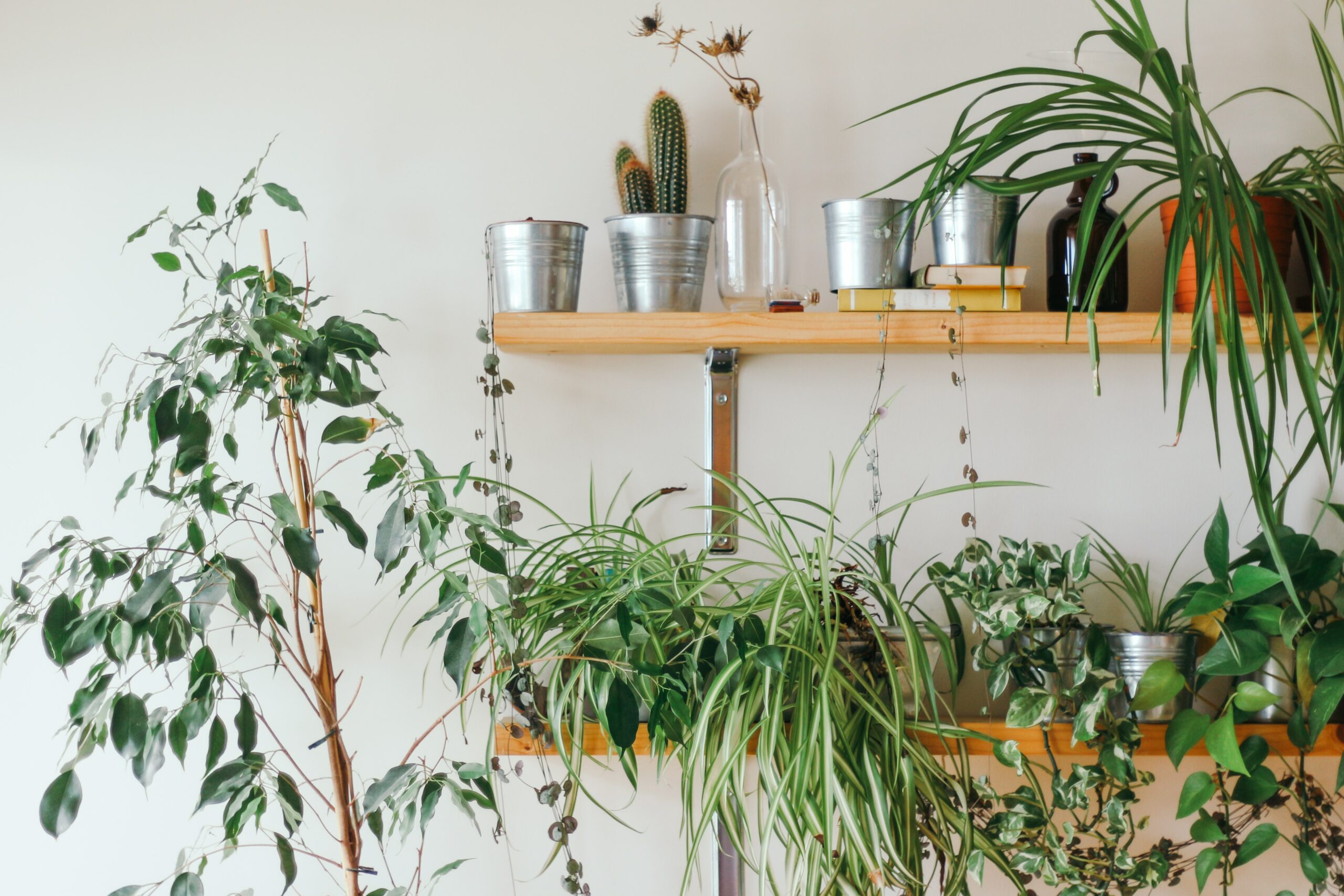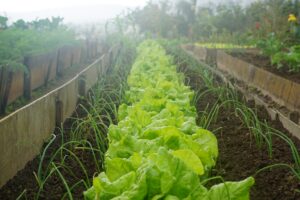The top 9 things you need to know about Indoor Plants

Indoor plants are a great way to liven up a room and bring a bit of the tranquillity that comes from being around nature. The simple act of caring for indoor plants can also add a calming ritual to your day.
Having a better understanding of your indoor plants will help you care for them better and increase the chances of your plant living a long, healthy life. Here are the top 9 things you need to know about indoor plants.
1. Every indoor plant is different
As we’re fond of saying, there’s actually no such thing as an ‘Indoor’ plant. Rather, there are many plants of all different types and species that can survive in an indoor environment. The category of ‘Indoor Plants’ covers plants from all over the world, from diverse climates like freezing deserts, temperate jungles and dry savannahs.
So while there are a handful of tips and tricks that apply to all indoor plants – many of which we’ll talk about in this article – it can be tough to give advice that applies to every plant. And that’s okay! This diversity is part of what makes plants so beautiful and interesting.
All this means is that you may not be able to take a ‘one-size-fits-all’ approach to caring for your indoor plants. Always check the care instructions for your plant to find out what kind of environment it needs. You can always contact us to ask our friendly gardening experts any questions you might have.
2. Be careful not to overwater! It’s easier to do than you think.
Overwatering is the most common reason that indoor plants die. People water their plants regularly because they care about them and they want them to do well, but not every plant needs that much water. Constant watering may literally drown many popular plants.
This is partly because plants need oxygen to breathe. Soil that is always wet won’t let enough oxygen through, and the roots may suffocate as a result. Overwatering can also lead to root rot and attract pests, diseases and fungus to your plant. Some plants will be more susceptible to this than others.
Luckily, you can usually spot the signs of overwatering before you get to this stage. Soil that is always damp is the biggest giveaway, but yellowing or browning leaves and soft, mushy stems are another sign. You may even notice a damp, unpleasant odour.
If your plant is exhibiting any of these signs, try watering it less. It should return to normal over time. You should also invest in pots with good drainage and try allowing the soil to drain completely after watering. Check out our step-by-step guide to watering your plants for more info.
3. Good quality potting mix is just as important as water or sunlight.
Potting mix – and soil in general – is essential to plant growth. We’d even argue that it’s on the same level as water and sunlight when it comes to growing strong, vibrant plants. If you’re shopping at our store, try our Diacos Premium Potting Mix. We’ve used our gardening knowledge to formulate our own premium total care soil that plants will love.
Some indoor plants will require different soil types in order to truly thrive. There are roughly three types of soil out there: rich composted soil, clay soil and sandy soil. Most of the indoor plants that we stock prefer rich, nutritious soil, but some plants will naturally prefer clay and sand instead.
You can tell which type of soil is which by squeezing some in your hand. Rich soil will feel moist and a little crumbly to the touch, clay soil will be stubborn and solid, and sandy soil will fall apart in your hand. This ‘squeeze test’ is also a great way to test the current level of moisture in your soil.
4. Salt will build up in your soil if you don’t leach it.
Speaking of soil, you may need to occasionally flood or ‘leach’ your soil to flush out any salt deposits that have been building up. How often you need to do this will depend on your plant, your soil and your environment.
One thing that causes salt to build up very quickly is using softened tap water to water your plants. Soft water is generally treated with sodium to remove the ‘harder’ minerals and make it more pleasant to drink. However, this high sodium content will cause salt deposits to build up fast in your soil.
A heavy watering that is allowed to drain fully out of the pot should remove these salt deposits. However, leaching will also flood the helpful nutrients out of your soil as well. Using some kind of fertiliser or plant food after you leach can help restore a healthy level of nutrients to your plant soil afterwards.
5. Indoor Plants are good for you!
Humans have been tending to gardens for thousands of years. Recently, a lot of research has been done into the relationships between gardening and good health. There are plenty of scientific studies out there detailing all the different ways that keeping indoor plants is good for our wellbeing.
For one, researchers have found that stress levels, productivity and attention span all improve when there are plants in the room. Plants have also been shown to remove some air pollutants and improve the quality of your indoor air – you can thank NASA for figuring that one out.
Finally, strong links have also been found between regularly touching soil bacteria and having good gut health. Yes, really. So what are you waiting for? Get that green thumb going and get healthy! We’re very passionate about the health benefits of gardening, and you can read more here.
6. But not every indoor plant is good for your pets…
If you own a cat or a dog, you need to be careful when you’re choosing an indoor plant. Many popular varieties of indoor plants – like Monsteras or Lilies – can be toxic to your household pets. They contain naturally occurring toxins that are relatively harmless to us but can hurt or even kill our furry friends.
Always read the care instructions or chat with one of our friendly garden experts if you are ever unsure. If you feel that you absolutely must keep one of these toxic plants in your home, be sure to keep it somewhere well out of reach from your pets.
Thankfully, there are plenty of dog and cat-safe indoor plants out there for you to choose from instead. These include Calathea (Prayer Plants), Lady Palms and Boston Ferns.
7. Don’t be afraid to experiment, but be steady about it.
Caring for any plant is a bit of a trial-and-error process. You’ll likely end up trying lots of different things as you respond to what your plant is telling you, whether that’s moving it into different lighting or changing up your watering schedule.
Even the most experienced gardeners will take time to learn the preferences of their new plant. This experimentation is a natural part of gardening and will help make you a more confident, practised green thumb over time – so don’t be afraid to try new things!
It is still good to go steady, however, as consistency is important to plants. A lot of plants won’t handle lots of sudden changes or fluctuating temperatures very well, even if they are otherwise hardy. The Fiddle Leaf Fig is a good example of this.
So go slowly and carefully when you are changing something for your indoor plant. The last thing you want to do is accidentally cause your plant to go into shock.
8. Indoor plants need a little bit of outdoor time too.
As we mentioned earlier, ‘Indoor Plants’ don’t really exist. All plants come from the outdoors, but if a plant can survive well inside, then it’s an indoor plant. However, no plant is truly designed to live inside, and your indoor plants will benefit from spending some time outside once in a while.
When to put your plants out depends on what they need. Some light rain will be great for your thirstier plants, and most plants (except low light indoor plants) will appreciate a few hours of unfiltered sunshine every now and then.
Just be careful about putting your indoor plants out in the freezing Winter cold. As we mentioned, these kinds of temperature fluctuations can shock or even kill some plants. The burning midday sun in Summer may also prove too brutal for some plants, so use your best judgement with the weather.
One other good reason to give your plants a bit of rain is dust. Dust will build up on your plants in the still indoor environment, and it can interfere with their photosynthesis. You can fix this by gently wiping down your plant leaves with a rag, but giving them a little natural rain and wind is even easier.
9. Pests happen. But they are fairly easy to deal with.
An indoor plant that is well looked after will provide you with joy for years and years. But over such a long time frame, the likelihood that you will deal with plant pests is all but inevitable.
Pests are a common issue with indoor plants, but they are not the end of the world. Aphids, mealybugs, mites, scale insects and fungus gnats are some of the most frequent offenders. These little guys are often hard to spot and can cause havoc with your plant over time.
Thankfully, pests are usually easy to get rid of with the right methods and a bit of patience. Check out our guide on how to deal with the 7 most common indoor plant pests for more information.
-
 19, Aug, 2022
19, Aug, 2022How to Grow and Care for Your Indoor Fiddle Leaf Fig
The Fiddle Leaf Fig – or Ficus Lyrata – is a popular... -
 19, Aug, 2022
19, Aug, 2022Growing Vegetables, our Top Tips!
Growing your own vegetables can be so rewarding. We’ve collated... -
 14, Jul, 2022
14, Jul, 2022How to Grow a Vegetable Garden: A Guide for Novice Green Thumbs
In 2014-15 in Australia, just 7% of adults and 5% of children...


